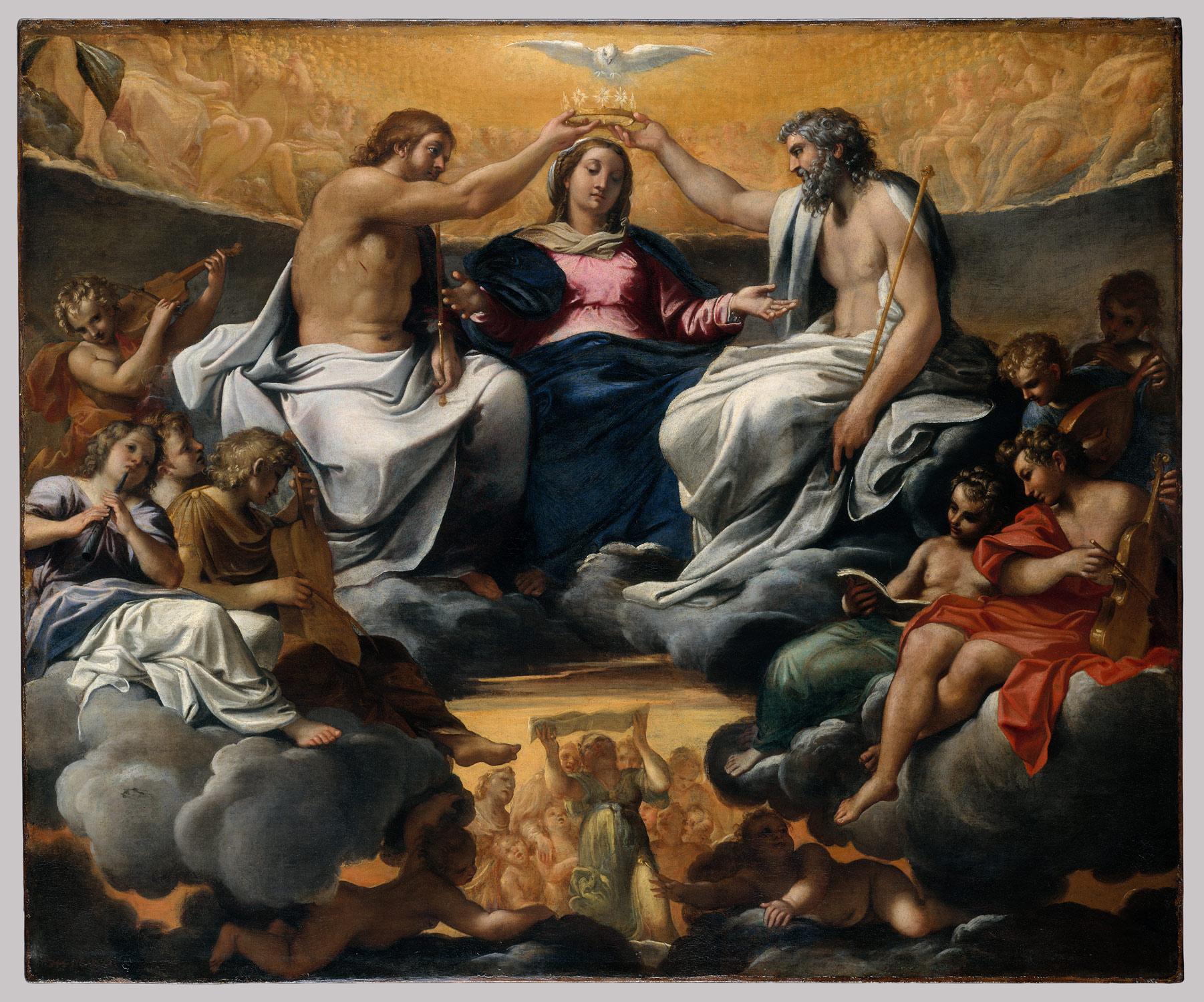Renaissance and Baroque at The Met
The Coronation of the Virgin Mary by Annibale Caracci (Italian, 1560-1609)
This particular picture was painted for Cardinal Pietro Aldobrandini of Rome in 1595. Annibale brought together two characteristics of baroque painting: it is an oil on canvas piece with a Roman style sensitivity to the effects of natural light and color, and the spatial organization and idealized figures associated with the Renaissance. With the Virgin Mary being the centerpiece of this painting, one can see the Roman Catholic influence on artwork during this period. Raphael’s frescoes in the Vatican inspired this composition, while the figure of God the Father was based on an ancient Roman sculpture. The paintings dimensions are rather large at 46 3/8 x 55 5/8 in. (117.8 x 141.3 cm)
Madonna And Child by Duccio di Buoninsegna (Italian, 1278–1318)
This piece, believed to have been painted between 1290-1300, is Tempera and gold on wood and has dimensions of (Overall with engaged frame, 11 x 8 1/4 in. (27.9 x 21 cm); painted surface 9 3/8 x 6 1/2in. (23.8 x 16.5 cm) Duccio places great emphasis on touch; the child's slight grasp of his mother's (Madonna) veil, the left index finger bent under the fold of his robe, and the way Christ's right foot gently makes contact with his mother's wrist and sleeve. The style is also extremely representative of the renaissance time period with its use of illusionistic parapet, based on the fictive architectural surroundings of the frescoes of the life of Saint Francis in the Basilica of San Francesco, Assisi.


Comments
Post a Comment